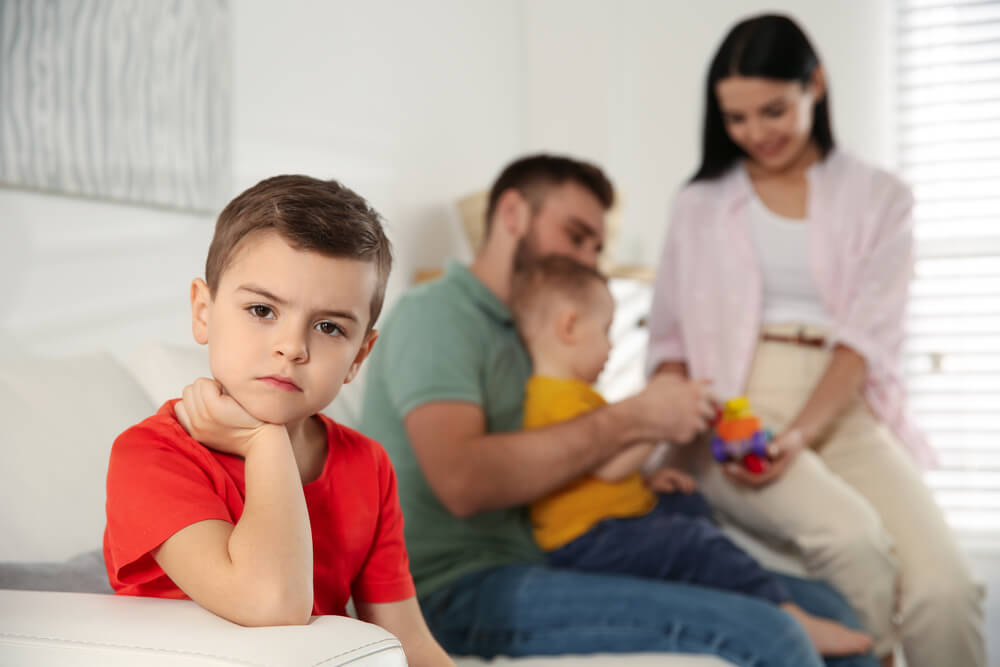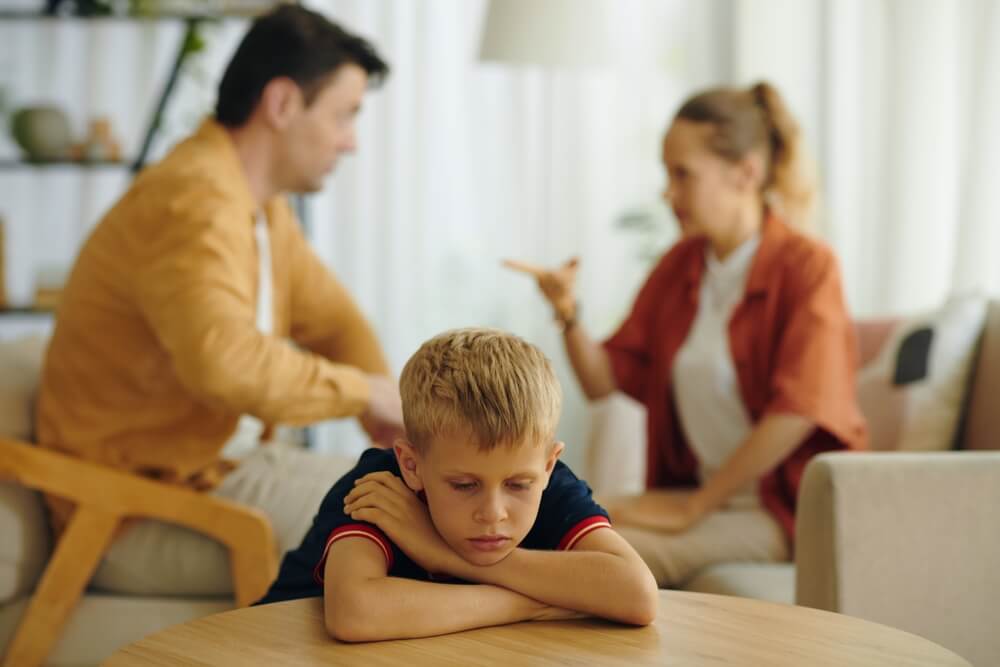What are Healthy Family Dynamics—and How They Affect Your Family’s Wellbeing

You’ve probably heard the phrase “family dynamics” a lot—but what does it actually mean? And how many different types of family dynamics are there?
We’ve got all the answers you need in the guide below—not just on the family dynamics meaning, but ways to ensure the interactions, communication, and roles of the members of your clan are as healthy as possible.
You may be surprised at the extent to which understanding family dynamics can uplevel your relationships, improve kids’ behavior, and strengthen bonds. And if you’d like some tips to help enhance your current family dynamics, we’ve got those for you, too!
Contents:
- What are Family Dynamics?
- Types of Family Structures
- Functional Family and Dysfunctional Family
- The Role of Alliances Within Families
- Healthy Family Dynamics
- How Can Family Dynamics Be Improved?
- Toxic Family Dynamics
- How to Step Back From Toxic Family Dynamics
- FAQs
What are Family Dynamics?

Davor Geber/Shutterstock.com
Family dynamics refers to patterns of interaction between family members and includes hierarchies, roles, and communication. It’s about how family members interact with each other regarding their individual preferences and goals, and the emotional connections between each.
The dynamics within a family are often influenced by various factors including the family’s values, culture, beliefs, and experiences. There can be unhealthy or healthy family dynamics—the latter has been closely linked to not only better health and well-being but even lower rates of depression and disease.
If you’re worried that your family dynamics aren’t as good as they could be, there’s great news. The situation can be changed for the better, and we’ll cover this in detail below.
Types of Family Structures

Red Stock/Shutterstock.com
There are, generally speaking, six main types of family structures, each of which has its own set of family dynamics.
Nuclear Families
Also referred to as “traditional” families, nuclear family structures comprise two parents and their children. The kids may be biological or adopted; the key element of this family structure is that the parents are raising their children together within the family home. Although generally on the decline, around 69% of kids still live in nuclear families.
Single-Parent Families
A single-parent family is made up of one parent raising one or more children; the parent in these cases has either been through a divorce, was never married to the child’s other parent, or is widowed. While raising kids alone can be very hard, this family structure can result in all members maintaining a particularly strong relationship, and developing more resilience.
Extended Families

PeopleImages.com – Yuri A/Shutterstock.com
This family structure has been around for hundreds of years and remains, in many cultures, the most common type of household. They are comprised of two or more adults (related through blood or marriage) and, usually, children. In most cases, the extended family structure allows members to better achieve common goals, and enjoy additional support.
Childless Families
Although often overlooked in terms of family structure examples, childless families, where two partners don’t want or can’t have kids, are still family units. The decision of whether or not to have children is a hugely personal one, and, for some couples, having kids doesn’t fit their preferred lifestyle, or is something that is just not for them.
Stepfamilies
With blended families on the rise, stepfamilies are increasingly becoming the norm when it comes to family structures. They’re created when two families merge into one, perhaps following a remarriage or a new cohabitation arrangement.
There are lots of different forms of stepfamilies, each with its own family dynamics. For example, the partners in the new relationship may both have kids, or one has children and the other does not. The partners may also share a child together.
Going from a single-parent or nuclear family to a stepfamily scenario may be challenging, but it can successfully be achieved.
Grandparent Family
In scenarios where one or more grandparent is raising their grandchild (or grandchildren), it’s a family structure known as a grandparent family. Although generally the least common type of family structure, it’s estimated there are around 2.4 million grandparents in the US, who are raising approximately 4.5 million grandchildren.
Related: What Are the 4 Types of Parenting Styles and Which One is Right for You?
Functional Family and Dysfunctional Family

f.t.Photographer/Shutterstock.com
Firstly, it’s important to stress that “functional” doesn’t mean “perfect.” It’s normal for relatives to quarrel, and all families will have their problems and issues. Similarly, “dysfunctional” doesn’t mean a family is inherently bad; there are likely many factors at play feeding into the situation. And there are lots of changes that can be made to tackle dysfunctionality and create a positive difference.
Functional Families
Generally speaking, a functional family has clearly defined roles, responsibilities, and boundaries, embraces mutual respect, and enjoys spending time together. As well as celebrating individual differences (in terms of, for example, feelings, preferences, and goals), functional families engage in healthy conflict and are free of abuse and neglect.
Within functional families, domestic activities are fairly distributed so that a single member is not overloaded, and each member has individual responsibilities (that are age-appropriate) for specific tasks. Hierarchy levels are also properly distributed; in real-world terms, this means that both parents (where there are two) share the same level of authority at home (a horizontal hierarchy), but retain a vertical hierarchy over their kids, which allows them to set and apply rules and standards.
In a functional family, there are no power struggles, and the family has the ability to navigate stressful situations and come through the other side as a strong unit, however challenging this may be.
Dysfunctional Families
There are many reasons that a family may become dysfunctional. For example, one of the parents may have a mental health condition or problems with addiction; or a family may become dysfunctional over time, perhaps because one of the children has behavioral problems causing life to gradually revolve around this issue.
There is often a general sense of tension within dysfunctional families, with members unable to express their needs or emotions, or members uninvolved with each other. There may be one dominant or authoritarian member of the family who does not consider the wants or needs of the other members or there may be no clear boundaries or rules in place.
Abuse, violence, or neglect may be present, or there may be no demonstration of love between members. Children may be left to fend for themselves, or expected to take on too many responsibilities. These are just a few examples of dysfunctional family traits.
Improve your family’s peace of mind with Findmykids. Use the app to monitor your child’s location, receive notifications about their whereabouts, and manage their screen time—helping you stay involved and connected in their daily life.
The Role of Alliances Within Families

Ground Picture/Shutterstock.com
It’s natural for an alliance (or alliances) to form between family members—being mindful of this can help us recognize the impact they can have on overall family dynamics. These alliances both demonstrate a mutual affinity and interest between members.
For example, when siblings form an alliance, this can be successful in providing leverage against parental authority. If mom forms an alliance with a daughter, this may result in a competitive edge being introduced in terms of other siblings, or in the mother treating this daughter like a friend, and confiding inappropriately when the child is still at a young age.
Healthy Family Dynamics
What do healthy dynamics look like? The traits below are typically seen where healthy family dynamics are present:
- Clear communication and proximal interactions, where every member of the family feels safe and comfortable expressing themselves openly.
- Stability, allowing family members to build and maintain strong connections.
- Strong coping skills.
- Commitment: healthy families are committed, loyal, and supportive.
- Mutual support and role reciprocity.
- Mutuality; this describes a general feeling of warmth and cohesion within the family unit and also refers to feeling included, supported, and loved.
There are profound benefits to having healthy family dynamics. As well as making family life more enjoyable, they help individual family members cope with stress, increase self-esteem and a sense of well-being, provide social support, and encourage members to engage in healthy behaviors. Healthy family dynamics also allow members to feel secure and loved and promote the development of personal responsibility and boundaries.
How Can Family Dynamics Be Improved?

Liderina/Shutterstock.com
While there are many types of family dynamics, one thing is always true: there are steps that can be taken to improve the situation. Here are some tips to get started.
Celebrating Uniqueness
Recognizing and celebrating each family member’s uniqueness and diversity is a great start to improving family dynamics. Appreciating every member’s perspective, talents, and specialness can help avoid having unrealistic expectations and fostering resentment.
Practice Active Listening
The ability to be present and actively listen is one of the things that define a healthy family dynamic. Practice really taking the time to listen to other family members, and encourage them to do the same; show interest in their opinions (even if you disagree), take an interest in their lives, and be open to hearing all sides when conflict arises.
Work Towards Forgiveness
Resentments and conflicts can linger within families for years, undermining the ability to form healthy connections. Working toward forgiveness with the help of a trained counselor or therapist can help with this.
Set Boundaries
Functional families have effective and consistent boundaries and rules in place. If things have slipped a little in this regard, get back on track by holding a communal family meeting to discuss and establish limits and rules. By giving all members of the family a stake in these boundaries, they’re much more likely to be followed. And be sure to enforce them consistently, too.
Address Jealousy and Sibling Rivalry

New Africa/Shutterstock.com
To help keep your family dynamic healthy, it’s important to address any issues of jealousy and sibling rivalry. Sibling rivalry doesn’t just affect young children but can be present between grown siblings, too. Addressing prejudice (whether real or perceived), being authentic, and improving communication can all help improve the situation.
Recognize How to Support Family Members
Thinking carefully about how family members need support is also a good way to enhance family dynamics. It’s important to remember that support is about providing what a person needs, not necessarily supply what we think they lack—and that every individual requires support in a different way; it’s not always about finding a solution to their problems.
Show Plenty of Affection
If you think your family dynamics could be improved, consider the level of affection that’s being shown to each member. This doesn’t need to be just in the form of hugs: affection can be shown through words of encouragement, letting your family members know how proud you are of them, or by considerate acts of kindness.
Use Modern Technologies
In today’s digital age, apps like Findmykids can play a supportive role in maintaining a healthy family dynamic. The app allows parents to stay connected with their children, know their whereabouts, and ensure their safety. This can reduce stress and anxiety for parents, fostering a more harmonious and trusting relationship with their kids.
Stay connected and ensure your child’s safety with Findmykids. Download the app today and bring peace of mind to your family.
Toxic Family Dynamics

fizkes/Shutterstock.com
The definition of a toxic family is one in which there is a consistent pattern among family members of exhibiting harmful behaviors towards each other. Toxic families typically handle conflict in a way that is damaging to one or more members. Toxic family dynamics may include:
- Children are expected to meet unrealistic standards and/or are harshly criticized.
- Children’s needs aren’t met.
- Parents exert too much control or influence over their children’s lives so that they are unable to grow or express themselves freely.
- The presence of abuse or neglect.
- A lack of love, respect, or compassion.
- Substance abuse.
It can be difficult to identify toxicity within family dynamics. Often, a look back at our own childhood can help us realize how the parenting we have experienced may shape our expectations of family life today. Recognizing this can help us avoid repeating a pattern of behavior, so we can embrace healthy types of family dynamics.
How to Step Back From Toxic Family Dynamics

Dragon Images/Shutterstock.com
If you think that one or more of your family members are toxic (perhaps you’ve reflected on your own childhood and recognized some of the traits and characteristics we’ve listed above), then there are ways to step back from this harmful behavior. While it may not be possible to change a toxic family member’s personality, there are ways to protect yourself.
Firstly, it’s a good idea to decide what you want from the relationship. If you’d like to maintain a connection with, for example, a toxic parent, but don’t wish to allow this person to have too much information about your life, you may decide to limit meetings to just once a month and remain mindful about what you share during the times you are together.
Practicing detachment can also help. This means making a conscious effort to avoid topics that bring up strong emotions, keeping conversations casual, and leaving (or ending a conversation) early if necessary.
Talking to someone about your experiences within a toxic family can be really helpful in terms of your mental well-being, and figuring out ways to move forward. A therapist or counselor can provide the support you need.
We Are Family: The Importance of Embracing a Healthy Family Dynamic

Ground Picture/Shutterstock.com
Family dynamics can have a profound effect on both the well-being of individual members and the strength of the family unit itself. While it’s normal for families to argue and have their issues and problems, dysfunctional families can have a hugely detrimental and long-term impact on all their members. If you think your family is dysfunctional, or you experienced a dysfunctional or toxic family environment as a child that’s affecting you today, it’s important to seek help to get the support you need.
If you’d like to improve the dynamics within your family, there are plenty of ways to do so, from practicing active listening to thinking about the way your family sets rules and boundaries. Simply putting fun on the agenda regularly and spending time together is a great way to strengthen connections and uplift all family members.
What are your experiences of family dynamics? We’d be really interested to hear—drop us a line in the comments box below.
FAQs

Evgeny Atamanenko/Shutterstock.com
What are 5 healthy family dynamics?
Five healthy family dynamics are regarding each family member as a unique individual with an opinion, respecting physical and emotional boundaries, setting appropriate, fair, and consistent expectations and rules, appropriately meeting each member’s needs, and ensuring every member of the family feels safe and secure.
What is the most common family dynamic?
The most common family dynamic in the United States is the nuclear family. This type of family structure is comprised of two parents bringing up their child or children together in the same household.
What is the best family dynamic?
In terms of structure, there is no one “best” family dynamic, as long as the dynamic is a healthy one. This means a dynamic in which there is mutual love, respect, and mutuality, and in which every member’s needs are being met.
What are normal family dynamics?
A normal, or healthy, family dynamic is one where every family member feels loved and supported, and in which their uniqueness is celebrated. In this type of family dynamic, members can navigate challenges and problems without the strength of the unit being undermined and without harm to individual members.
The picture on the front page: PeopleImages.com – Yuri A/Shutterstock.com
Проверьте электронный ящик



















